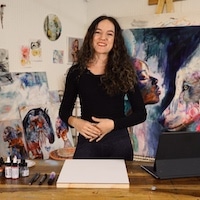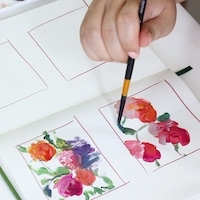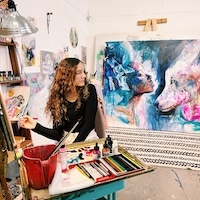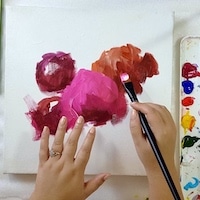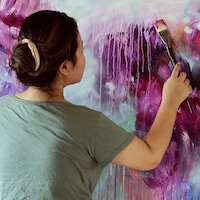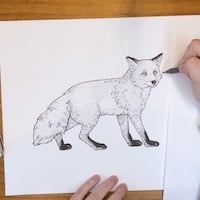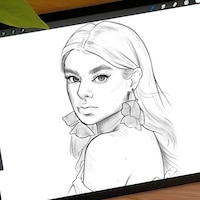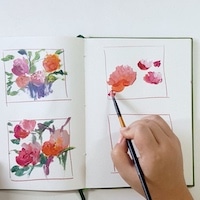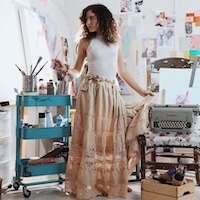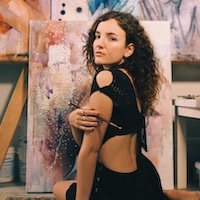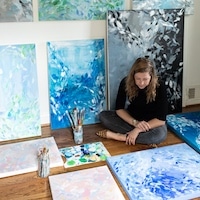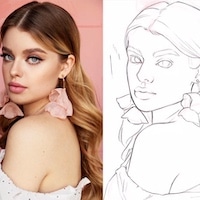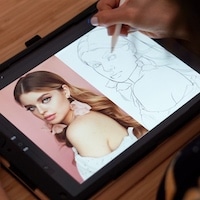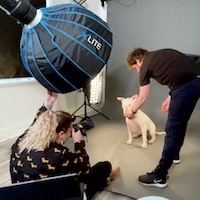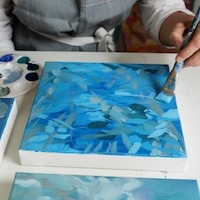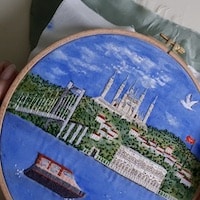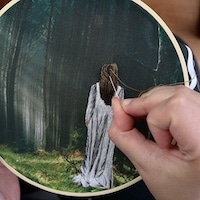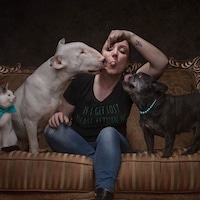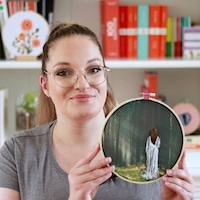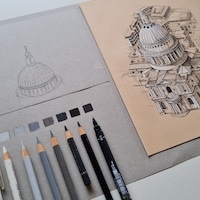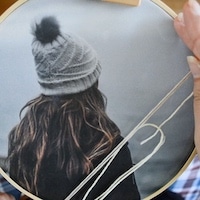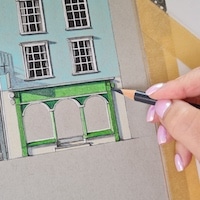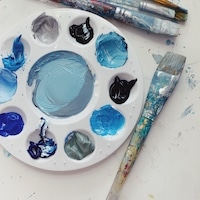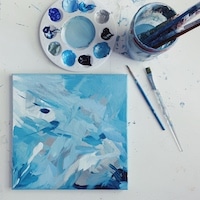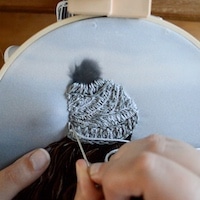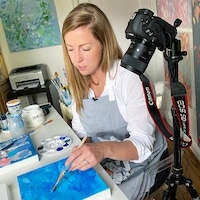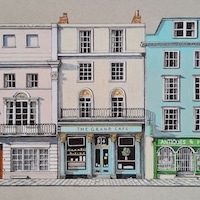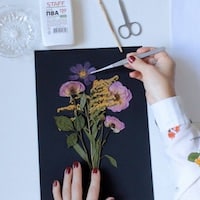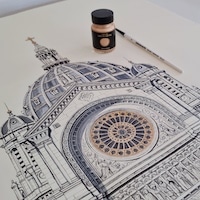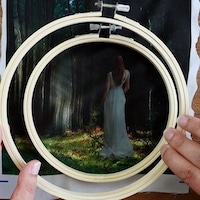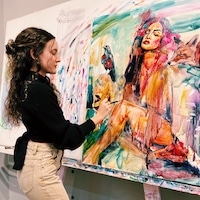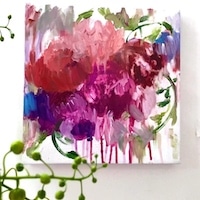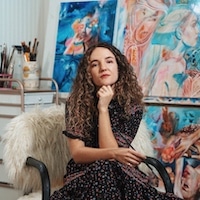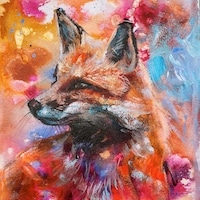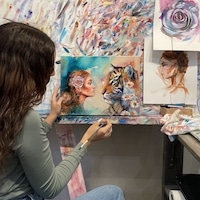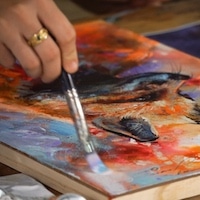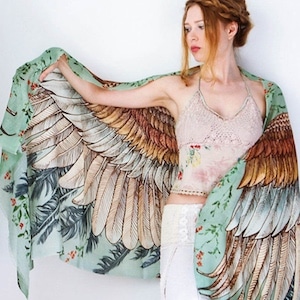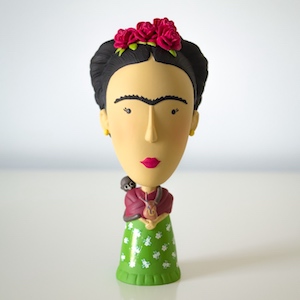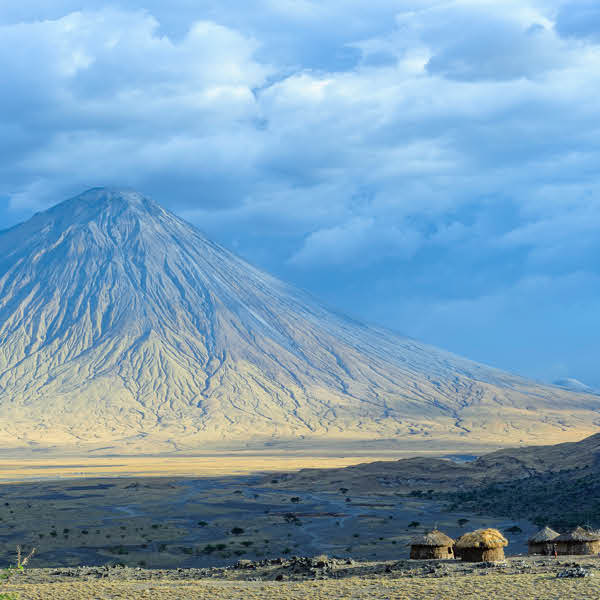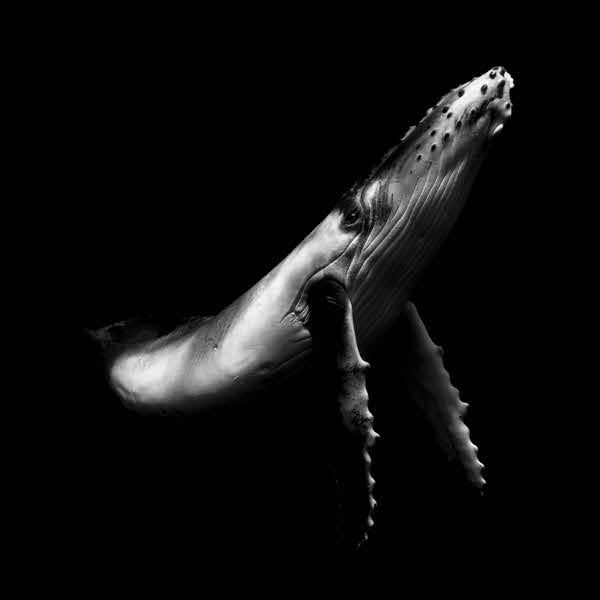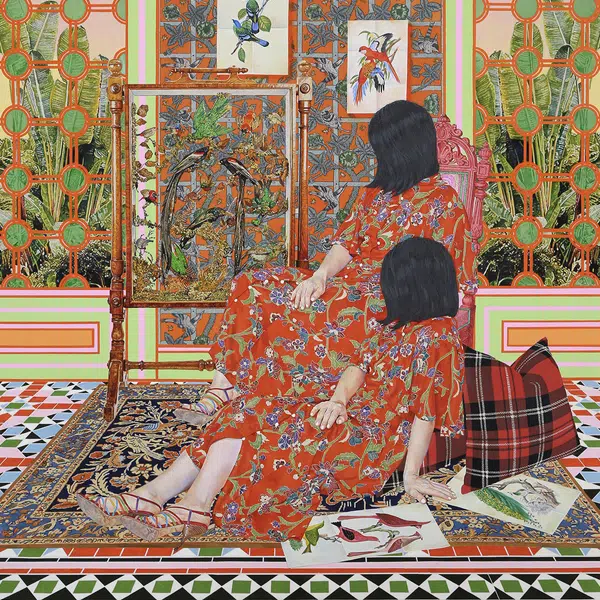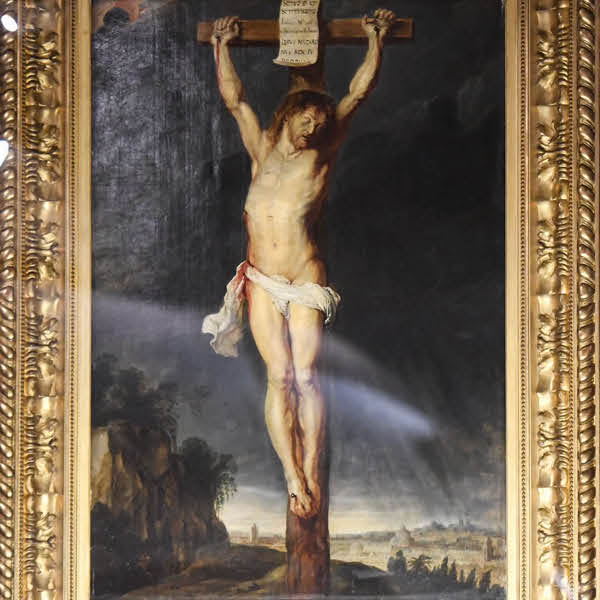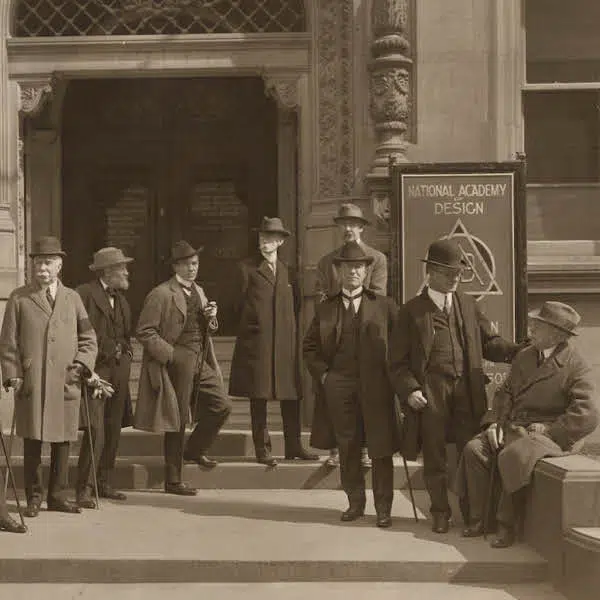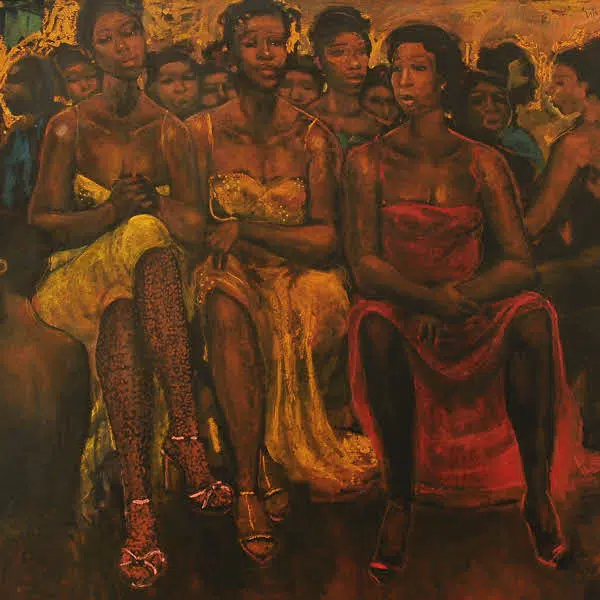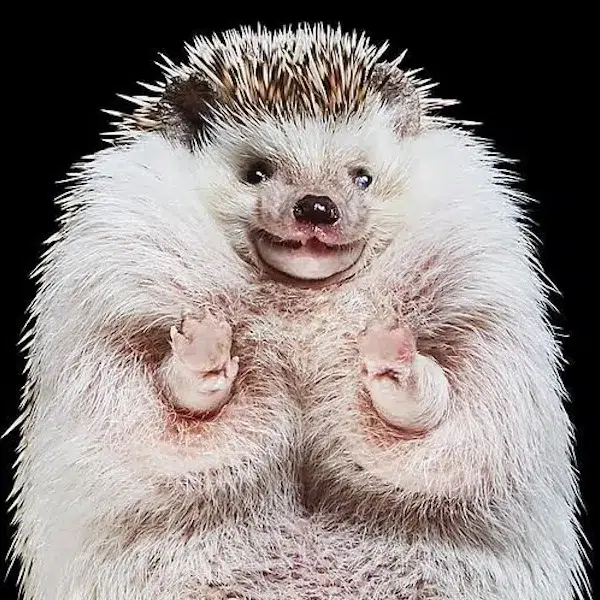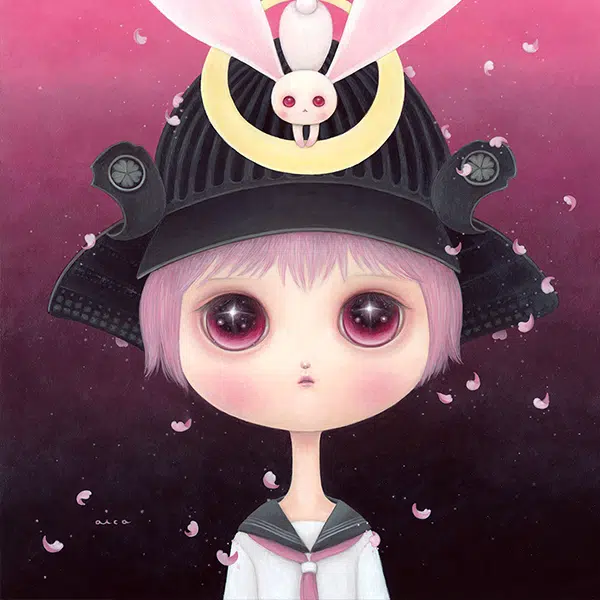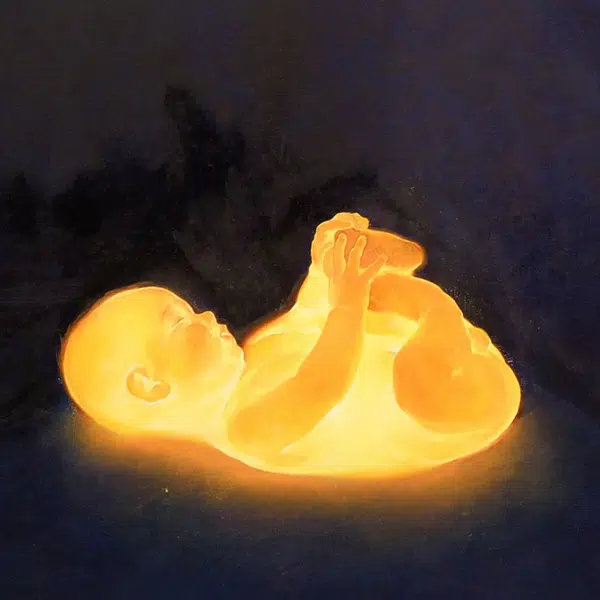
“Captivity”
When asked about his artistic influences, Marco Grassi often credits sfumato as one of them. The technique, which gradually blends colors, light, and shadow, emerged during the Renaissance, and lent itself to the hazy yet realistic canvases that characterize the era. Though compelled by it, Grassi also knew he wanted to push the style further, merging its core principles with that of contemporary art.
And so Grassi’s own visual language emerged. For years, the Italian artist has created monumental paintings replete with microscopic details, achieving a stunning sense of hyperrealism. But this effect goes beyond simple figuration—it’s also ethereal and fluid, most clearly captured in how Grassi renders skin. Each painting manages to find the softness and vibrancy of its subject’s skin, while also elevating their bodies through surreal compositions or poses.
One such painting is Breathe, which depicts a woman nestled in a sprawling bed of flowers, leaves, and other greenery. The figure and the organic forms surrounding her are both remarkably realistic; but, in combining the two, Grassi generates a more dreamlike atmosphere.
Ethereal Embrace is another poignant example of this. In this composition, a woman has collapsed over a table as a swan perches beside her, its wings open and draped over her. From afar, the swan may appear threatening in how it towers above the woman; but, upon closer inspection, it seems to be a source of comfort instead, much like the clever, tender-hearted animals that populate fairy tales.
“I usually incorporate symbolic and surreal elements,” Grassi explains to My Modern Met. “I’ve painted various images that explore human nature, as well as others that address the relationship between humans and the natural world.”
We had the chance to speak with Marco Grassi about his creative influences, process, and his relationship with hyperrealism. Read on for My Modern Met’s exclusive interview with the artist.

Detail from “Paradox of Evolution.”
What originally drew you to hyperrealistic painting, and how have you developed your representational skills over time?
I wouldn’t say that painting in a hyperrealistic manner was necessarily my goal from the start—it just sort of happened. I have always admired the Old Masters and tried to see reality through their eyes. I wanted to capture the gentle expressions of their figures and the soft transitions they perfected during the Renaissance. Over time, my style evolved into what it is today: a combination of hyperrealism with elements of surrealism and symbolism.

Detail from “Paradox of Evolution.”
What is the process of creating one of your paintings?
Everything starts with an idea—something I care about, something that worries me. Then the idea takes shape, first blurry, but the more I think about it, the more defined it becomes. I begin by making numerous sketches, planning the composition, the model’s pose, the environment, and the color palette. Then I prepare the canvas. I prefer to sketch my composition directly on it first. I then proceed with multiple layers of color. Many assume that details are the most important layer, but without proper preparation of the underlying ones, they would look off.

“Paradox of Evolution.”

Detail from “Virtual Reality.”
How do you achieve such microscopic levels of detail in your paintings?
I think, to some extent, I am precise and meticulous. However, I consider the observation of nature to be the most important aspect. How does light hit a surface? How does it change color? How do shadows behave? All these questions are just as important when studying the human form as they are when capturing the tiniest detail. The same principles apply.

“Ethereal Embrace.”

Detail from “Ethereal Embrace.”
What is the traditional sfumato technique? Why is it important to your work, and how have you reinterpreted it?
Sfumato is a painting technique developed during the Renaissance. It involves blending colors, light, and shadow so seamlessly that transitions become imperceptible, with brushstrokes nearly invisible. I’ve always admired its extremely subtle gradations, muted tones, and delicate glazes, and I naturally incorporated them into my work early on.
I believe sfumato can give paintings an otherworldly softness and refinement. However, when we compare Renaissance works to my paintings, despite sharing the same fundamental principle, they remain quite different. I apply the sfumato technique not just to broad transitions but to every detail, every nuance of the skin. I also think I blend more colors—whereas the Old Masters often used a gradation of a single hue, my approach involves a richer interplay of tones.

“The Secret Room.”
You often depict women in your paintings. What compels you about women as artistic and thematic subjects?
That’s true. Most human figures I’ve painted so far have been female, even though I’m currently working on a new painting that represents the male figure. When I search for a model, I usually have a clear idea in mind: I’m looking for a certain expression, an aura, and the traits I’ve sought for my past projects, I’ve found in different female models. Besides that, I feel drawn to an antique aesthetic—a timeless beauty that isn’t necessarily tied to contemporary trends.

“Edge of the Self.”
How would you describe your work in only a few sentences to someone who is unfamiliar with it?
I paint lyrical and hyperrealistic representations, mainly of human figures. I almost never depict a person simply as they are. I usually incorporate symbolic and surreal elements, transforming limbs into inanimate materials like fine china or precious stones. My works often explore human nature or our corrupted relationship with the natural world and non-human animals.

“Mother of Pearl.”

Detail from “Mother of Pearl.”

Marco Grassi in his studio.
What do you hope people will take away from your work?
First of all, I truly hope they enjoy the painting. It’s something I can never get enough of when I visit a museum or art gallery. I love the moment when I first encounter a work of art that speaks to me. I hope others feel the same way when they stand in front of my paintings.
Besides that, there are many themes that I deeply care about and that often lie behind my works. I’ve painted various images that explore human nature, as well as others that address the relationship between humans and the natural world. My hope is that looking at my paintings goes beyond mere observing details. I hope it becomes a moment of reflection—and perhaps even self-reflection—on what we are doing to our home, planet Earth, to each other, and to other animals, whom we treat as objects despite their sentience.

